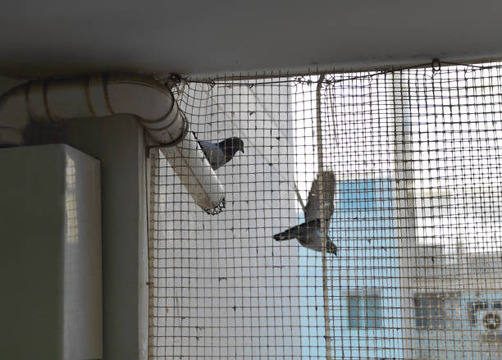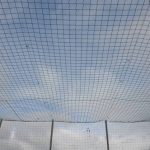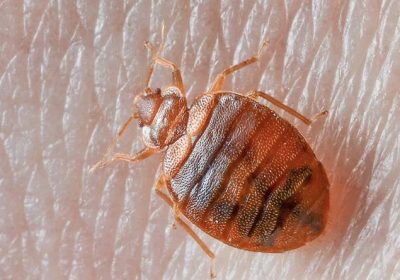Choosing the Right Bird Netting: A Comprehensive Guide
Definition of Bird Netting
Bird netting is a type of mesh material used to prevent birds from accessing certain areas. Made from durable materials like polyethylene or polypropylene, bird netting can be an essential tool in protecting crops, buildings, and other properties from bird-related damage.

Importance of Bird Control
Why is bird control so crucial? Birds, while beautiful and important to our ecosystem, can cause significant problems. From pecking at ripe fruits in your garden to nesting in ventilation systems, birds can lead to crop loss, property damage, and health hazards. Effective bird control methods, like bird netting, can mitigate these issues without harming the birds.
Understanding Bird Netting
What is Bird Netting?
Materials Used
Bird netting is typically made from high-density polyethylene (HDPE) or polypropylene, both known for their strength and durability. Some netting is UV-stabilized to withstand prolonged exposure to sunlight, ensuring longevity even in harsh weather conditions.
Types of Bird Netting
- Heavy-duty Netting: Ideal for larger birds or industrial applications.
- Lightweight Netting: Suitable for gardens or residential use where smaller birds are the primary concern.
- UV-resistant Netting: Designed for prolonged outdoor use, resisting degradation from sunlight.
Common Applications of Bird Netting
Agricultural Settings
Farmers often use bird netting to protect crops like berries, grapes, and other fruits from being eaten by birds. Netting can cover entire rows of crops or individual plants, ensuring a healthy and bountiful harvest.
Urban Environments
In cities, bird netting can prevent birds from roosting on buildings, which can lead to structural damage and unsightly droppings. It’s commonly used on ledges, rooftops, and around ventilation systems.
Residential Use
Homeowners use bird netting to protect gardens, balconies, and other outdoor spaces. It can keep birds from nesting in eaves or damaging garden plants, maintaining the aesthetic and integrity of your home environment.
Benefits of Bird Netting
Protecting Crops and Gardens
Bird netting acts as a physical barrier, preventing birds from reaching and damaging crops and garden plants. This is particularly crucial for farmers and gardeners who rely on these plants for income or personal use.
Preventing Property Damage
Birds can cause significant damage to buildings and infrastructure. Netting can prevent birds from nesting in eaves, chimneys, and other structures, reducing the risk of costly repairs.
Reducing Health Risks
Bird droppings can harbor harmful bacteria and diseases. By keeping birds away from certain areas, netting helps maintain a cleaner and healthier environment.
Humane Bird Control Method
Unlike other methods that can harm or kill birds, netting simply prevents them from accessing certain areas. This makes it a humane and ethical choice for bird control.
Choosing the Right Bird Netting
Factors to Consider
Size of the Area to be Covered
Before purchasing bird netting, measure the area you need to cover. Ensure the netting size is adequate to provide full coverage, including some extra material to secure it properly.
Type of Birds to be Excluded
Different birds require different netting. Smaller birds like sparrows will need a finer mesh, while larger birds like pigeons or seagulls may require a heavier-duty netting.
Durability and Weather Resistance
Consider the environmental conditions. If the netting will be exposed to harsh weather, opt for UV-stabilized and weather-resistant materials to ensure longevity.
Comparing Different Products
1. Mesh Size
Choose a mesh size based on the type of birds you need to exclude. Smaller mesh sizes are suitable for tiny birds, while larger meshes can keep out bigger birds without obstructing airflow or light.
2. Material Quality
High-quality materials like UV-stabilized HDPE or polypropylene ensure the netting will last longer and withstand environmental stresses.
3. Ease of Installation
Some netting products are easier to install than others. Look for netting that comes with installation kits or has features that simplify the setup process.
Installation of Bird Netting
Preparation
1. Measuring the Area
Accurately measure the dimensions of the area you plan to cover. This will help you purchase the correct amount of netting and avoid wastage.
2. Gathering Necessary Tools and Materials
Common tools include scissors, zip ties, hooks, and support poles. Ensure you have everything you need before starting the installation.
Step-by-Step Installation Guide
1. Setting up Support Structures
Install support structures like poles or frames to hold the netting in place. These should be sturdy and positioned to create an effective barrier.
2. Securing the Netting
Drape the netting over the support structures and secure it with zip ties or hooks. Ensure the netting is taut and there are no sagging areas where birds can slip through.
3. Checking for Gaps and Securing Edges
Inspect the installation for any gaps or loose edges. Secure these areas to prevent birds from finding their way through the netting.
Maintenance and Inspection
Regular Inspections
Regularly check the netting for any signs of damage or wear. This helps in addressing issues before they become major problems.
Common Issues and Fixes
Tears and Holes
Repair any tears or holes immediately using patches or replacement sections of netting.
Sagging Netting
Adjust and tighten any sagging sections to maintain effective coverage.
Weather-related Damage
Inspect the netting after extreme weather events and repair any damage promptly.
Seasonal Maintenance Tips
Clean the netting regularly to remove debris and bird droppings. This will keep it in good condition and extend its lifespan.
Alternatives to Bird Netting
Other Physical Barriers
1. Bird Spikes
Bird spikes prevent birds from landing on ledges and other surfaces. They are an effective deterrent for larger birds.
2. Bird Wire
Bird wire systems create an unstable landing surface, deterring birds from perching.
Visual and Auditory Deterrents
Devices like reflective tape, predator decoys, and sound machines can scare birds away without harming them.
Chemical Repellents
Non-toxic sprays and gels can deter birds from landing on treated surfaces. These need to be reapplied periodically.
Legal and Ethical Considerations
Local Wildlife Protection Laws
Ensure your bird control methods comply with local wildlife protection laws. Some birds may be protected, and harming them can result in fines or legal action.
Ethical Implications of Bird Control
Choose humane methods that do not harm birds. Bird netting is an excellent choice because it deters birds without causing injury.
Best Practices for Humane Bird Control
Regularly inspect and maintain your bird control systems to ensure they remain effective and humane.
Conclusion
Recap of Key Points
Bird netting is an effective, humane way to protect your property from bird damage. By understanding the different types of netting and considering factors like area size and bird type, you can choose the right solution for your needs.
Importance of Effective Bird Control
Effective bird control protects your property, health, and the environment. It’s a necessary step for anyone dealing with bird-related issues.
Encouragement to Choose the Right Bird Netting Solution
Take the time to research and select the best bird netting for your specific situation. With the right netting, you can enjoy peace of mind knowing your property is protected.
FAQs about Bird Netting and Bird Control
Q: Is bird netting safe for birds? A: Yes, bird netting is a humane method of bird control that prevents birds from accessing certain areas without causing them harm.
Q: How long does bird netting last? A: High-quality bird netting can last several years, especially if it is UV-stabilized and properly maintained.
Q: Can bird netting be used in all weather conditions? A: Yes, UV-stabilized and weather-resistant bird netting can withstand various weather conditions, making it suitable for year-round use.
Q: How do I clean bird netting? A: Bird netting can be cleaned with a mild detergent and water. Regular cleaning helps maintain its effectiveness and durability.
Q: Where can I buy bird netting? A: Bird netting is available at garden centers, home improvement stores, and online retailers. Ensure you choose a reputable supplier for high-quality products.
By following this guide, you’ll be well-prepared to choose and install the right bird netting for your needs, ensuring effective and humane bird control.
Read more about Bird Netting
- Choosing the Right Bird Netting Material: A Comprehensive Guide
- Installation Techniques for Bird Netting: Step-by-Step Instructions
- The Environmental Impact of Bird Netting: Balancing Wildlife Protection and Human Needs
- Top Benefits of Using Bird Netting in Agriculture and Horticulture
- Common Mistakes to Avoid When Installing Bird Netting
- Innovative Bird Netting Solutions for Urban Areas
- The Legal Aspects of Bird Netting: Regulations and Best Practices
- Maintenance and Longevity of Bird Netting: Keeping Your Netting Effective
- Comparing Bird Netting with Other Bird Control Methods: Pros and Cons









